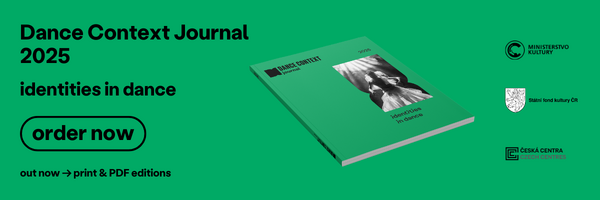Transfigured Night – A Performance By Ballet Prague
On Sunday March 1, 2009 there was a celebration at the Theater at Dlouhá Street. Ballet Prague, the ensemble that has become a milestone in the history of ballet in Czechoslovakia due to its innovative approach was formed forty-five years ago. And, unsurprisingly, the anniversary was celebrated with a performance dedicated to Luboš Ogoun, one of the company's founders (the other being Pavel Šmok), who unfortunately did not live to see the performance.
The Ballet Prague itself has been succeeded since then by a company called Ballet Prague/Prague Chamber Ballet of Pavel Šmok that refers to both periods in the history of the ensemble, thus the spectators also had an opportunity to see two pieces by Pavel Šmok called Stabat and Zjasněná noc (Transfigured night) that are not usually performed at other places. In addition to those two pieces a choreography called Divocí koně (Wild Horses) by company's recent artistic director Lucie Holánková was performed too.
The opening night of Pavel Šmok's dance rendition of a part of Stabat Mater by Antonín Dvořák was on November 18, 1995, however, the piece has lost nothing of its appeal since then. The choreography is marked by clasped hands, stretched out towards the sky, of bodies sliding down to the ground, of severe blows and postures referring to crucified Christ - a dance that emphasizes the substance of Dvořák's music. Generally speaking, the interpretation by the new Ballet Prague ensemble was well rendered and feelingful, though there were differences in quality of performances and authenticity of expression, particularly among the male dancers. The choreography is definitely not based on synchronous movement, the number and formations of dancers shift very quickly. However, at some points there were imprecisions in the interpretation. Hopefully these were caused by the unfamiliarity of dancers with the piece and they will not occur in ensuing performances anymore.
The whole evening was highlighted by a piece that lends its name to the whole programme. Zjasněná noc (Transfigured Night), based on Arnold Schönberg's eponymous string sextet was created by Pavel Šmok in 1986. On March 1, 2009 it was performed by Lucie Holánková, David Stránský and Alexandr Volný, all of whom mastered their dramatically intensive roles with superb technical and expressive proficiency. Lucie Holánková performed the role of a Jewish girl, who after the war confesses to her beloved (David Stránský) that she fell in love with a fellow prisoner in a Nazi ghetto (Alexandr Volný) and she is pregnant with his child. The light design is definitely worth mentioning too as it helped to define two different time layers in the story (post-war period and the girl with the fellow prisoner in the ghetto).
After those two dramatic works by Pavel Šmok a somewhat less serious piece was well needed and Divocí koně (Wild Horses) by Lucie Holánková is a choreography that fits into the ranks perfectly. Due to its blithe tone and well-known, catchy tunes by Jaromír Nohavica it is usually well received by audiences. Nevertheless, those who look for deeper meaning in performances would seek in vain in this case. Dance itself closely follows the lyrics, thus, when Nohavica sings about a boy who fell in love with a girl, but she did not love him a dancer with theatrical gestures makes it clear that she really does not love him, or, in the song Na dvoře divadla a dancer performs the role of a comedian in king's costume, prancing, surrounded by people with wraps. Anyway, the best part of the whole choreography was the very beginning of Divocí koně, which is based on an eponymous song. Dance matched the music perfectly, evoking the run of wild horses, yet being not too descriptive. Light design was very nice and interesting too, only silhouettes of dancers could be seen.
Overall, the 45th anniversary of Ballet Prague was a pleasurable cultural experience and the dancers proved their interpretative qualities and their potential for the future. Moreover, as Ballet Prague/Prague Chamber Ballet placed on the stage choreographies by Pavel Šmok once again, they gave people the opportunity to see outstanding pieces which, although in the context of today's dance milieu no longer considered innovative, still belong among first-rate, absorbing pieces that can be seen onstage. Anyway, it is a pity that Ballet Prague does not have more opportunities to follow the original idea the ensemble was created with – to find new and innovative approaches to choreography and stage management. It would be certainly appropriate and welcome, if next to timeless choreographies by Pavel Šmok appropriate contemporary works were placed on stage too.
Translation: Tomáš Valníček


